Introduction to Hover Birds
Hover birds is a captivating and enigmatic aspect of bird flight that has intrigued naturalists and bird enthusiasts for centuries. It is a specialized skill possessed by a select group of bird species, allowing them to suspend themselves in mid-air with remarkable precision and control. In this guide, “Birds That Hover: A Guide To Unique Avian Flight,” we embark on a journey into the fascinating world of these aerial acrobats.
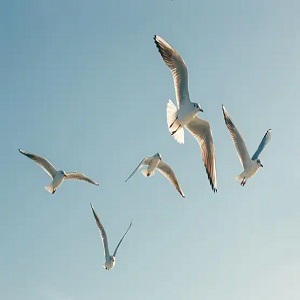
Hovering is a flight strategy that sets certain birds apart from their soaring and gliding counterparts. Unlike typical avian flight, where forward motion is constant, hovering birds have the remarkable ability to remain stationary in the air, often in challenging conditions like strong winds or while foraging for food. This unique skill requires a combination of extraordinary adaptations, including specialized wing morphology, rapid wing beats, and finely-tuned muscle coordination.
Throughout this guide, we will explore the science behind avian hovering, the diverse species that employ this flight strategy, their incredible adaptations, and the ecological significance of hovering behavior. From the iridescent hummingbirds of the Americas to the stealthy kestrels and the coastal specialists like ospreys and kingfishers, we will delve into the remarkable world of birds that defy gravity.
Join us on this journey as we uncover the secrets of avian hovering, shedding light on the incredible diversity and adaptability of these extraordinary creatures that grace our skies.
Masters of the Hover: Hummingbirds
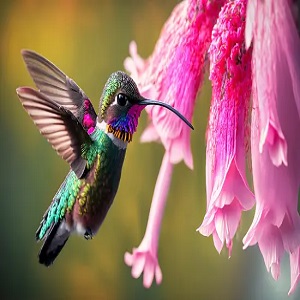
Hummingbirds are the undisputed champions of avian hovering. These tiny, jewel-toned birds are renowned for their remarkable ability to remain suspended in mid-air, a feat that sets them apart from all other bird species. Their hovering prowess is a result of several extraordinary adaptations.
At the core of their ability is their incredibly rapid wingbeat, which can range from 50 to 80 beats per second, depending on the species. This rapid wing movement generates lift and thrust, allowing them to hover effortlessly. Their wings also have a unique ball-and-socket joint at the shoulder, which enables them to rotate their wings in a figure-eight pattern, further enhancing their maneuverability.
To sustain their high-energy lifestyle, hummingbirds have a metabolism that is among the fastest in the animal kingdom. They feed on nectar from flowers, using their specialized, tubular-shaped bills and extendable, tube-like tongues to extract the sugary liquid. Their hovering skills are crucial for accessing nectar-rich blossoms deep within dense foliage.
Hummingbirds are also known for their aerial acrobatics, which they use not only for feeding but also in territorial disputes and courtship displays. These dazzling displays of hovering agility and speed have captivated birdwatchers and scientists alike.
Intriguingly, hummingbirds are exclusive to the Americas, with over 300 species inhabiting diverse ecosystems, from rainforests to deserts. Their mastery of hovering is a testament to the marvels of avian adaptation and continues to be a source of fascination for bird enthusiasts worldwide.
Hovering Raptors: Kestrels and Harriers
Kestrels and harriers, two distinct groups of raptors, have developed unique hovering abilities that set them apart in the world of birds of prey. While they share the skill of mid-air hunting, their techniques and habitats differ significantly.
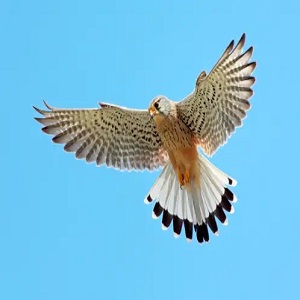
American Kestrel (Falco sparverius):
These petite raptors are known for their impressive hovering skills. With rapid wingbeats and a keen eye for prey, the American kestrel can remain almost stationary in the air, making it a formidable hunter of insects, small mammals, and birds. Their vivid plumage and the distinctive markings on their faces make them easily recognizable.
Northern Harrier (Circus hudsonius):
Harriers are larger raptors with an elegant and distinctive appearance. Their long wings and owl-like facial discs give them a unique silhouette in flight. Harriers are often seen gliding low over open fields and marshes, using their keen sense of hearing to detect the movements of small mammals and birds. When they spot prey, they can hover briefly before executing a precise strike.
Both kestrels and harriers have adapted their hunting techniques to maximize their success in different environments. While kestrels are often found in open spaces like grasslands and deserts, harriers thrive in wetlands and meadows. Their hovering abilities allow them to explore these habitats with precision, making them remarkable examples of avian adaptation and efficiency.
Coastal Hoverers: Ospreys and Kingfishers
Coastlines and riverbanks come alive with the mesmerizing displays of two avian marvels: Ospreys and Kingfishers. These remarkable birds have evolved unique adaptations that allow them to hover effortlessly over water bodies as they hunt for their prey.
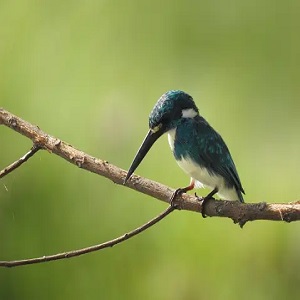
Ospreys, often called “fish hawks,” are large raptors known for their distinctive white heads and powerful talons. They are masters of hovering, a skill essential for their piscivorous diet. When an Osprey spots a fish swimming near the water’s surface, it hovers in place, maintaining a steady position in the air with its wings flapping rapidly. With keen eyesight, it then executes a breathtaking dive, plunging into the water feet-first to snatch its prey.
On the other hand, Kingfishers are small to medium-sized birds renowned for their striking plumage and long, dagger-like bills. They rely on hovering to spot aquatic prey like fish and aquatic insects. Kingfishers utilize rapid wingbeats combined with their unique ability to maintain a nearly stationary position in the air, much like a helicopter. Once they spot their quarry, they execute a swift and precise dive, emerging from the water with their catch secured in their beaks.
Both Ospreys and Kingfishers exemplify the beauty and efficiency of avian flight, showcasing how different species have evolved to master the art of hovering in their pursuit of sustenance along coastal and freshwater habitats.
Hovering in the Tropics: Sunbirds and Swifts
The tropics are a haven for avian diversity, and two remarkable bird families, sunbirds and swifts, stand out for their incredible hovering abilities. These small, vibrant creatures have adapted to their lush and densely foliaged environments in unique ways.
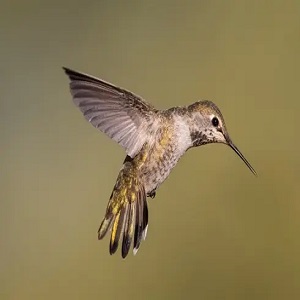
Sunbirds are often referred to as the “jewels of the tropics” due to their iridescent plumage. These tiny birds, typically found in Africa, Asia, and Australia, are nectar feeders with a penchant for hovering near brightly colored flowers. Their hovering behavior allows them to access nectar deep within the floral tubes that other birds can’t reach. Sunbirds exhibit remarkable agility, their wings beating rapidly to maintain a stable position in mid-air, resembling tiny, shimmering helicopters.
Swifts, on the other hand, are a group of aerial acrobats known for their astonishing flight capabilities. Found across tropical regions worldwide, swifts are expert fliers capable of sustained hovering. Their elongated wings and streamlined bodies enable them to glide effortlessly through the air, catching insects on the wing. Swifts are often seen performing intricate aerial displays, twisting and turning in pursuit of their prey, making them a captivating sight in the tropical skies.
Both sunbirds and swifts exemplify the incredible diversity of avian adaptations within tropical ecosystems, showcasing how these birds have mastered the art of hovering to thrive in their lush and vibrant habitats.
Birds Of Michigan: Discover The Top 33 Backyard Birds
Hovering Techniques and Adaptations
Hovering is a remarkable flight behavior observed in select avian species. To defy gravity and remain suspended in the air, birds have developed ingenious techniques and adaptations that set them apart from other flying creatures. This section delves into the captivating world of avian hovering, shedding light on the mechanics and biological marvels that make it possible.
1. Winged Wonders: Hovering birds, such as hummingbirds and kestrels, possess unique wing structures. Their long, narrow wings provide exceptional lift and maneuverability, allowing them to control their position with remarkable precision.
2. Rapid Wing Beats: Hovering birds are known for their incredibly rapid wing beats. Hummingbirds, for example, can beat their wings up to 80 times per second, creating the characteristic humming sound that defines their name. This high frequency of wing movement generates the lift necessary to counteract gravity.
3. Specialized Musculature: Hovering requires immense energy, and hovering birds have highly specialized flight muscles that enable sustained effort. These muscles are capable of rapid contractions, enabling the quick wing beats essential for maintaining altitude.
4. Aerodynamic Mastery: Hovering birds are masters of aerodynamics. They can alter the angle of their wings and tail feathers to control lift and direction, enabling them to hover with exceptional stability, even in turbulent air.
5. Fuel Efficiency: To fuel their high-energy flight, hovering birds have evolved specialized feeding strategies. They possess long bills or beaks designed for probing flowers or capturing insects mid-air, ensuring a continuous supply of nectar or prey.
In this section, we’ll explore these hovering techniques and adaptations in more detail, uncovering the secrets behind this remarkable avian phenomenon and showcasing the marvels of evolutionary engineering that enable birds to hang motionless in the sky.
The Science of Hovering
Birds that hover have evolved remarkable feeding strategies to thrive in their unique ecological niches. Their ability to remain suspended in the air allows them to access food sources that other birds cannot. Here, we explore the diverse feeding strategies employed by these avian acrobats.
1. Nectar-Feeding Mastery: Hummingbirds are renowned for their proficiency at sipping nectar from flowers. Their hovering ability is crucial for accessing the nectar hidden deep within blossoms. As they hover in front of a flower, their specialized long bills and extendable, tube-like tongues extract the sugary reward.
2. Precision Predators: Hovering raptors like kestrels and harriers are masters of the aerial hunt. They hover effortlessly in search of small mammals, insects, or birds, using their keen eyesight to spot prey from above. Once detected, they dive swiftly to capture their quarry with remarkable precision.
3. Fishing on the Wing: Coastal birds such as ospreys and kingfishers are skilled at hunting fish from the air. They hover briefly before plunging into the water with remarkable speed and accuracy, using their powerful talons or beaks to snatch fish from the depths.
4. Aerial Insectivores: Swifts and sunbirds are adept at capturing insects while in flight. Swifts, with their streamlined bodies and wide mouths, scoop up insects as they soar, while sunbirds utilize their long, slender bills to snatch insects from the air during their hovering bouts.
5. Traplining and Territory Defense: Some hovering birds, like hummingbirds, establish territories and meticulously patrol them, visiting a network of food sources in a predictable sequence known as trap lining. This strategy allows them to defend their territory effectively and maximize their foraging efficiency.
Unique Hovering Behaviors Across Species
Hovering is a remarkable avian adaptation that has evolved in various bird species to cater to their specific ecological niches and dietary preferences. While the concept of hovering remains consistent, the behaviors associated with it can vary significantly among different birds.
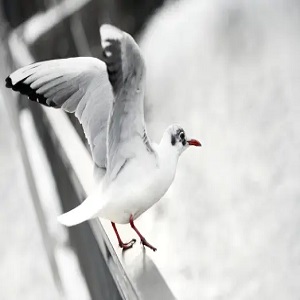
Hummingbirds, for instance, are perhaps the most iconic hoverers. They achieve this feat by rapidly flapping their wings in a figure-eight pattern, allowing them to stay stationary while extracting nectar from flowers. Their incredible wingbeat frequencies, often exceeding 50 beats per second, are unparalleled in the avian world.
In contrast, kestrels and harriers are hovering raptors known for their hunting prowess. They utilize their keen eyesight to detect prey from above, then employ a combination of wing adjustments and wind currents to maintain a stable hover while scanning the ground for small mammals and insects.
Kingfishers and ospreys, on the other hand, showcase a distinctive plunging behavior after hovering. These birds hover briefly over water bodies, then dive headfirst with remarkable precision to catch fish. Their hovering is a crucial part of their fishing strategy, ensuring a successful strike.
Some sunbirds and swifts exhibit hovering behavior during feeding, utilizing specialized adaptations such as elongated bills or streamlined bodies to capture insects mid-air. These unique hovering strategies are tailored to their specific diets and habitats.
The Art of Photographing Hovering Birds
Capturing the beauty and grace of hovering birds through photography is a thrilling endeavor that requires a combination of patience, technique, and an understanding of avian behavior. Whether it’s the mesmerizing stillness of a hummingbird suspended mid-air or the focused intensity of a kestrel hunting in a hover, these moments are both challenging and rewarding to photograph.
1. Equipment: Start with a good camera body and a telephoto lens to capture details from a distance. Consider investing in a tripod or monopod to stabilize your shots.
2. Camera Settings: Set your camera to a high shutter speed to freeze the fast movements of hovering birds. A fast aperture (low f-number) will help you achieve a blurred background (bokeh), drawing attention to the bird.
3. Composition: Pay attention to the bird’s position and surroundings. A clean background with no distractions will make your subject stand out.
4. Patience: Waiting for the perfect moment is crucial. Be prepared to spend time observing and waiting for the bird to hover in the ideal spot.
5. Lighting: Utilize natural light to your advantage. Early mornings and late afternoons often provide warm, soft light that enhances your photos.
6. Focus and Depth of Field: Use autofocus to lock onto the bird’s eye, ensuring sharp focus. Experiment with depth of field to create different effects.
7. Experiment and Learn: Don’t be afraid to take multiple shots, trying different angles and settings. Review your photos regularly to learn from your successes and mistakes.
8. Respect the Birds: Always prioritize the welfare of the birds. Avoid disturbing them or their habitats.
Conservation Concerns for Hovering Species
Hovering birds, with their unique flight abilities, face a set of distinct conservation challenges that require special attention. While each species may have its own specific concerns, several common issues affect many hovering birds.
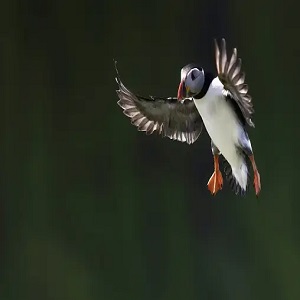
1. Habitat Loss: One of the most pressing concerns is the loss of suitable habitats. Urbanization, deforestation, and agriculture are all contributing to the destruction of critical nesting and foraging areas for hovering species.
2. Climate Change: Climate change is altering the distribution of prey species and affecting the availability of nectar-bearing plants, both of which are essential food sources for many hoverers. Shifts in temperature and precipitation patterns can disrupt breeding and migration patterns.
3. Pesticides and Pollution: Hovering birds are particularly vulnerable to pesticides and pollutants due to their reliance on insects and nectar. Pesticide use can lead to a decline in insect populations, impacting the food supply, while pollution can harm nectar-producing plants.
4. Collisions: Hovering birds, such as hummingbirds, can be at risk of collisions with windows, towers, and power lines. These accidents often result in injuries or fatalities.
5. Invasive Species: Invasive plants and animals can outcompete native species for resources, further threatening the habitats and food sources of hovering birds.
6. Disease: Disease outbreaks, especially in crowded feeding areas, can decimate local populations of hovering birds.
Addressing these conservation concerns requires collaborative efforts among researchers, conservation organizations, and communities. Implementing habitat preservation, sustainable land-use practices, and raising public awareness about the importance of hovering species are essential steps toward safeguarding these remarkable birds for future generations.
Birding Hotspots for Observing Hovering Birds
If you’re an avid birder with a fascination for avian flight and hovering behavior, there are several fantastic hotspots around the world where you can observe these remarkable birds in action. Here are some notable destinations:
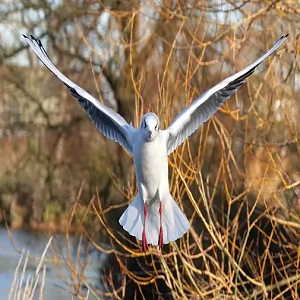
Costa Rica: This Central American gem is home to an astonishing variety of hummingbirds. Head to Monteverde Cloud Forest Reserve or La Paz Waterfall Gardens to witness these tiny dynamos hovering around vibrant flowers.
Ecuador: The country’s diverse ecosystems, from the Amazon rainforest to the Andes Mountains, offer opportunities to see a wide range of hovering species, including hummingbirds and sunbirds.
Arizona, USA: Southeastern Arizona’s sky islands, such as the Chiricahua Mountains and Ramsey Canyon Preserve, attract numerous hummingbird species during migration, making it a prime location for observing their hovering prowess.
Southern Africa: Visit South Africa’s Kruger National Park or the lush Zomba Plateau in Malawi to spot sunbirds and kingfishers displaying their mesmerizing hovering skills near water sources.
Southeast Asia: Countries like Thailand and Malaysia boast rich bird diversity, with species like the Black-thighed Falconet and the Asian Emerald Cuckoo showcasing their hovering talents in dense forests.
Australia: The continent is home to the exquisite Rainbow Bee-eater, which hovers gracefully while hunting insects. Head to Kakadu National Park or Queensland to catch a glimpse.
When birding at these hotspots, remember to bring your binoculars, a field guide, and a camera to capture these incredible moments. Additionally, local birding guides can provide valuable insights into the best times and locations for observing hovering birds, ensuring a memorable birding experience.
What Does Birds Of Prey Mean? Most Important Facts, Definition, Characteristics & Examples [2023]
Tips for Birdwatching and Identifying Hovering Birds
Birdwatching and identifying hovering birds can be a rewarding but challenging endeavor.
Learn the Species: Familiarize yourself with the hovering bird species in your area. Identify their distinct features, such as size, coloration, and wing patterns. Field guides and online resources are valuable tools for this purpose.
Study Their Habitat: Knowing the typical habitats of hovering birds can increase your chances of spotting them. Some prefer open fields, while others thrive near water bodies or forests. Research and visit suitable locations.
Seasonal Timing: Many hovering birds migrate, so understanding their seasonal patterns is crucial. Plan your birdwatching outings during their migration or breeding seasons for better sightings.
Binoculars and Optics: Invest in a good pair of binoculars or a spotting scope with decent magnification and clarity. This will help you observe hovering birds from a distance without disturbing them.
Patience is Key: Hovering birds can be elusive. Be patient, stay still, and maintain a low profile to avoid scaring them away. Use camouflage clothing if necessary.
Listen Carefully: Bird calls and songs can be essential clues for identification. Learn the distinctive vocalizations of hovering species to locate them more easily.
Photography Gear: If you’re interested in photography, bring along the appropriate equipment, like telephoto lenses and tripods, to capture stunning images of hovering birds.
Field Notes: Keep a notebook to record your observations, noting details like size, color, markings, behavior, and location. These notes can be valuable for later identification and documentation.
Join Birding Groups: Connect with local birding clubs or online forums to exchange information and get tips from experienced birdwatchers.
Respect Wildlife: Always prioritize the well-being of the birds. Maintain a safe distance, avoid disturbing nests, and follow ethical birdwatching practices.
Stories of Fascinating Hovering Encounters
One warm summer morning, I sat in my garden with a cup of coffee, watching the flowers sway in the gentle breeze. Suddenly, a tiny green blur materialized before me. It was a ruby-throated hummingbird, the master of hovering flight. With rapid wing beats, it hovered in front of a trumpet vine, its iridescent feathers catching the sunlight.
Mesmerized, I watched as the hummingbird probed the trumpet vine’s scarlet flowers for nectar. Its wings moved so fast they were nearly invisible. The bird’s body remained perfectly still, defying gravity with its exquisite hover.
As I marveled at this astonishing display, another hummingbird joined the dance. They engaged in an aerial ballet, darting and diving, their wings creating a soft hum in the air. It was a territorial dispute, a duel of grace and agility.
For minutes that felt like seconds, I was spellbound by their intricate maneuvers. Eventually, one hummingbird conceded and flew away. The victor resumed its feeding, a testament to the remarkable adaptations that allow these birds to hover and compete in the air.
That morning, I learned that the world of hovering birds is a realm of breathtaking beauty and intense competition, where every encounter is a glimpse into the wonder of avian flight.
How to Support Hovering Bird Conservation
Supporting hovering bird conservation is crucial to preserving these unique avian species. Here are some ways you can make a difference:
Habitat Preservation: Advocate for the protection of natural habitats where hovering birds thrive. Support and donate to organizations working to establish and maintain sanctuaries and protected areas for these birds.
Native Plant Gardens: Create bird-friendly gardens with native plants that provide nectar, insects, and perches for hovering birds. Avoid using pesticides and herbicides that can harm both birds and their prey.
Educational Outreach: Raise awareness about hovering birds through educational programs, workshops, and public talks. Share your knowledge about these birds with friends and communities to foster appreciation and conservation efforts.
Citizen Science: Participate in citizen science projects focused on hovering bird research. Your observations and data can contribute to scientific understanding and conservation initiatives.
Support Conservation Organizations: Contribute to or volunteer with organizations dedicated to bird conservation. These groups often conduct research, implement conservation programs, and advocate for policy changes.
Responsible Recreation: If you’re a birder or wildlife enthusiast, practice responsible and ethical birdwatching. Maintain a respectful distance, avoid disturbing nesting sites, and follow local regulations.
Advocacy and Policy: Advocate for stronger environmental regulations and policies that protect hovering bird habitats and reduce threats such as habitat loss and climate change.
Financial Support: Donate to initiatives specifically focused on the conservation of hovering bird species. Your financial support can fund research, habitat restoration, and awareness campaigns.
Conclusion: Celebrating the Wonders of Avian Flight
In conclusion, “Birds That Hover: A Guide To Unique Avian Flight” has taken us on an exhilarating journey into the mesmerizing world of hovering birds. Throughout this guide, we have marveled at the sheer ingenuity of nature, which has bestowed upon these avian wonders the ability to defy gravity and remain suspended in mid-air. From the agile hummingbirds to the majestic ospreys, we have witnessed a diverse array of species that have mastered the art of hovering.
The science behind avian hovering is a testament to the remarkable adaptations and evolutionary marvels that enable these birds to execute such breathtaking feats. Whether it’s the hummingbird’s rapid wing beats or the kestrel’s keen hunting skills, each species has its unique approach to hovering, which we’ve explored in depth.
Beyond the technical aspects, we’ve also delved into the ecological significance of hovering birds. Their ability to hover enables them to access specialized niches in their habitats, contributing to the delicate balance of ecosystems. However, hovering species face challenges such as habitat loss and climate change, which threaten their survival.
As bird enthusiasts and conservationists, it’s our duty to celebrate and protect these wonders of avian flight. By appreciating their unique abilities and understanding their ecological roles, we can work towards ensuring that future generations can continue to be captivated by the marvels of hovering birds. So, let us cherish and safeguard these magnificent creatures, ensuring that they continue to grace our skies with their awe-inspiring flights for generations to come.
FAQs:
What are Hover Birds?
This question addresses the basic definition and characteristics of Hover Birds, providing an introduction to the concept.
How do Hover Birds hover in the air?
This question delves into the mechanics and techniques that Hover Birds use to remain suspended in the air, which is a unique and intriguing aspect of these birds.
Where can I find Hover Birds in the wild?
This question focuses on the natural habitats and geographical regions where Hover Birds are commonly found, helping people who want to observe them in their natural environment.
What makes Hover Birds different from other bird species?
This question explores the distinctive features, behaviors, or adaptations that set Hover Birds apart from other types of birds, highlighting their uniqueness.
Are Hover Birds endangered or protected species?
This question concerns the conservation status of Hover Birds and any efforts in place to protect them, providing important information for those interested in their conservation.
![Hover Birds : An Important Guide To Unique Avian Flight [2023]](https://vetpomedix.com/wp-content/uploads/2023/09/Hover-Birds-An-Important-Guide-To-Unique-Avian-Flight-2023-1.jpg)
![Best Deer Proof Bird Feeder For Your Garden [2023]](https://vetpomedix.com/wp-content/uploads/2023/09/Gray-Bunny-Wild-Bird-Feeder-150x150.jpg)
![Fear Of Birds: Everything Surprising You Need To Know About Ornithophobia [2023]](https://vetpomedix.com/wp-content/uploads/2023/09/Fear-Of-Birds-Everything-Surprising-You-Need-To-Know-About-Ornithophobia-2023-150x150.jpg)